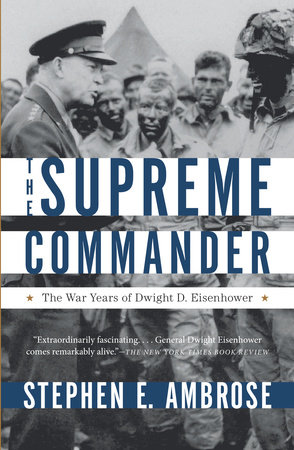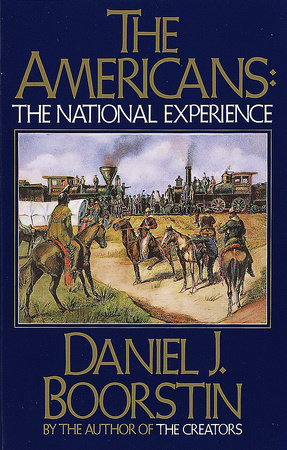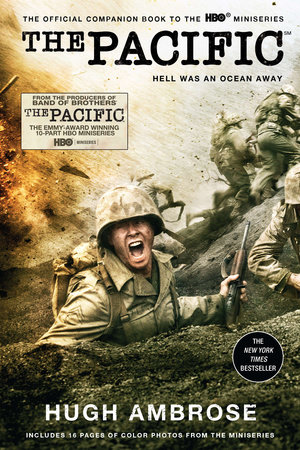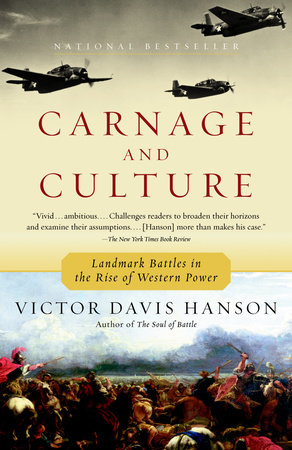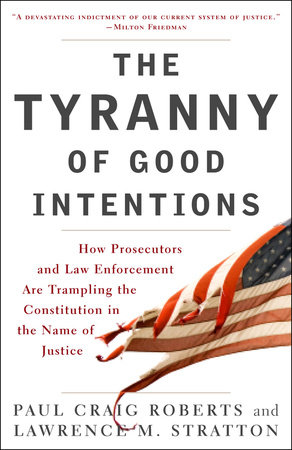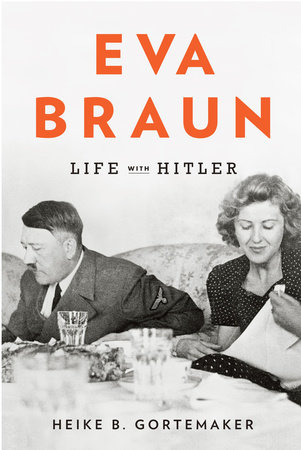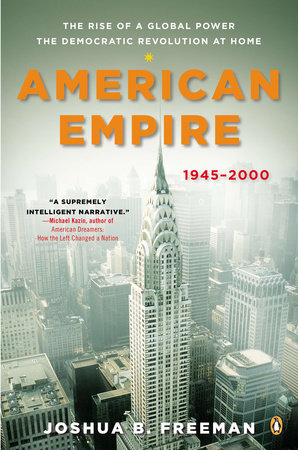Author Q&A
Q: What is the most important difference between Eva Braun: Life with Hitler and the other accounts that have been written of her life?
A: Biographies dealing with Eva Braun so far portray her as a tragic or ridiculous figure who, mostly ignored by Hitler, spent (indeed wasted) her life by waiting for him. They mainly emphasize her “tragic fate” and assume an unfulfilled existence as she stayed childless and, until her last day in the Berlin bunker, unmarried. She was, so is said, absolutely un-political and knew hardly anything about the course of events around her. Therefore Eva Braun’s life and her way of living are usually treated as a theme disconnected from Hitler’s personal and, more important, political activities. While Hitler is viewed as a person with no human feelings or bonds, Eva Braun is described as either a dull and naive blonde, or as a decent girl who had “the misfortune to fall in love with a monster” (Angela Lambert). In my book I tried to look behind the still existing myths surrounding the private live of Hitler and Eva Braun. I asked who Eva Braun, the woman whose name is inseparable tied to that of Hitler and the inhuman regime of the Nazis, really was. What can be said about herself and her relationship with Hitler? What kind of role did she play within Hitler’s private circle? How much influence or power did she have? Did she know about the holocaust? My book analyzes all available primary and secondary sources with regard to Eva Braun and takes a fresh and more critical look at the memoir literature, asking who said what, when and why. In doing so, the role of Eva Braun within the circle of the most trusted followers of Hitler became a different one.
Q: It seems that any study of Eva Braun must first wade through a vast amount of misinformation and obfuscation. What types of primary documents did you use in your research?
A: Because of the lack of primary sources, the common interpretations of Eva Braun were encouraged by the memoir literature written after the Second World War. In these accounts former members of the Nazi elite or members of Hitler’s staff mentioned wives, girlfriends or female relatives just as passive bystanders. Neither Hitler nor Eva Braun left any notes with information, illuminating the character of their relationship. There exist only a few postcards and letters written by Eva Braun and a diary fragment, dating from the 6th of February 1935 to the 28th of May 1935. But it is disputed whether these notes were actually written by Eva Braun, because the handwriting in old German is very different from other letters she wrote. But even if there are few personal documents by Eva Braun and none by Hitler, who had his most loyal adjutant destroy all private letters and documents at the end, there are a lot of statements and notes by others that shed light on the relationship between Braun and Hitler. Thus I used, among others, contemporary statements by Joseph Goebbels, Martin and Gerda Bormann, and interviews with the members of the “inner circle” conducted only a few weeks or months after the surrender of the German Wehrmacht. NS-functionaries as well as Hitler’s secretaries, adjutants and doctors were questioned by allied intelligence officers. Among them were Albert Speer, Karl Brandt, Theodor Morell, Christa Schroeder, Traudl Junge and Wilhelm Brückner. In addition I saw the interrogation files of the family and friends of Eva Braun (including her parents, her sisters, her friend Herta Schneider, Heinrich Hoffmann and other members of the “inner circle”) conducted by the German denazification-courts in Munich from 1947 to 1949. And last but not least I undertook an analysis and assessment of the memoir literature published since the 1950’s where Nicolaus von Below, Otto Dietrich, Albert Speer, Baldur von Schirach and many others expressed their views.
Q: Eva Braun was not the only woman who supported Hitler throughout his political career; Magda Goebbels and Ilse Hess remained by his side to the end. How does Eva Braun compare to these women who were particularly strong-willed and politically active? Were there rivalries between the three?
A: Actually women like Magda Goebbels, Emmy Göring or Ilse Hess had at least an official function since they represented the regime in the public. Ilse Hess had been an early campaigner for the Nazi Party throughout the 1920’s; Magda Goebbels took on the role as “First Lady” at Hitler’s side during official ceremonies after 1933. All these women became members of the NSDAP. Eva Braun in contrast never joined the NSDAP and – as a mistress – could play no public role. Therefore she never attended an official dinner at the Reich Chancellery in Berlin. But despite the fact that she did not perform in public, Eva Braun was not merely a passive bystander. Together with her employer, Hitler’s friend and photographer Heinrich Hoffmann, she became part of the Nazi propaganda machinery and served not just as “decoration”. She produced pictures and film material portraying Hitler at his Berghof retreat as a likable, caring person, a family man, fond of children. She sold her so-called private pictures of Hitler to Hoffmann and, in doing so, earned a lot of money. It cannot be said for sure how many photographs published by Hoffmann in his famous picture books about the “private life” of the “Führer” were actually taken by Eva Braun. However, Eva Braun’s activities demonstrate once more that the officially denied private existence of Hitler cannot be separated from his political life. All members of the Berghof circle, including Eva Braun, were not just witnesses, but convinced of the Nazi ideology.
Q: Your book necessarily discusses the place of women in National Socialism. Could you say something about the extent to which women visibly participated in Nazi political activism?
A: It is important to know that the image of the lives of women and girls in Germany created by the Nazi propagandists had little to do with reality. The actual lives of women beyond the “cult of the mother” were significantly more multi-layered and complex than is generally assumed. Nevertheless, visibly political active women, like “Reich Womens’s Leader” Gertrud Scholtz-Klink, were exceptions. Since women held no high-ranking positions in politics, the economy or the military, the lives of women in general, and the activities of the wives of the Nazi elite in particular, were seen as meaningless with respect to their political development. After the war, the women who had been around Hitler themselves gave the impression as if they had had nothing to do with politics during the Nazi dictatorship and had spent their time only with private matters. Even Ilse Hess, an early campaigner and stern activist of the Nazi Party, declared after 1945 that she, as a woman, had been always “passive”. Therefore, the women themselves and the memoir literature after the war produced the legend of “female innocence” that became part of the “exonerating debate” during the 1950’s. This view changed slowly during the 1980’s, when a new and more complex perspective on the social history of the “Third Reich” also highlighted the role of women. Now they are increasingly perceived as actors on the historical stage.
Q: Eva Braun repeatedly attempted suicide throughout her relationship with Hitler. Is this an indication of the neglect she suffered or does it point to something more?
A: The exact circumstances of Eva Braun’s attempted suicide with a pistol belonging to her father at the end of 1932 remain unclear. The same is true for another alleged suicide attempt in 1935. There are differing accounts of exactly what happened and when. But did Eva Braun in 1932 act calculatedly to make the absent Hitler notice her? Did she actually blackmail him? We cannot answer these questions. We can only speculate. In any case, only a year after his niece Geli Raubal’s suicide and in the middle of his political battle for the chancellorship, whose success was closely bound up with the “Führer cult” around him, Hitler could not afford a new scandal. Therefore he had to bring under control a relationship he had apparently misjudged. We can assume that, with this extreme act, Eva Braun showed Hitler early on her readiness to die. And in his eyes, this act perhaps proved the kind of self-sacrifice which he expected from his followers.
Q: Why did Hitler vigilantly keep his relationship with Eva Braun a secret, going so far as refusing to marry her?
A: First of all, the existence of a mistress did not fit into the successfully cultivated “myth” of the lonesome “Führer” who sacrificed his personal life for the cause of the German people. But more important might have been that Hitler feared the influence and the power of a wife who had legal rights and possibilities – as he himself once said. As a mistress, Eva Braun had no legal means but remained in a dependent position.
Q: You portray Hitler’s inner circle as confused and at times offended by Eva’s rapid ascension to the position of Hitler’s privileged mistress. What did this resentment stem from? Was it an issue of social class or a result of the mutual struggle for Hitler’s attentions?
A: Both. Eva Braun developed from a rather shy and insecure person in Hitler’s inner circle to a determined woman who played a more and more important role for the dictator. At latest in 1936, nobody could dare to challenge her position. Even Albert Speer and the powerful Joseph Goebbels, as well as others, sought her company in order to get a closer personal grip on Hitler. Within the hierarchy of Hitler’s closest circle, Eva Braun possessed a strong position. To get on well with Eva Braun was absolutely necessary for being invited to the Berghof, one female guest later claimed. Nevertheless, many members of Hitler’s staff and his private circle thought that she was not good enough for the “Führer.” They disliked and feared her.
Q: In your book Eva Braun is portrayed as deeply apolitical and yet you suggest that she died at Hitler’s side in order to assure her place in history. Is there a contradiction here?
A: In the fourteen years of her intimate relationship with Hitler, Eva Braun developed from an ordinary girl far from the center of power, who had grown up in a middle-class family and whose father believed “to the end” in the “Führer,” into a capricious, uncompromising champion of absolute loyalty to the dictator. It is true that she did not belong to the NSDAP, but this fact does not mean that she rejected the Nazi state or was opposed to it in any way. On the contrary: her life, at least as much as that of everyone else around Hitler, was shaped by his worldview, his charismatic attraction, and the extent of his power. The collaboration, within the scope of what was possible for her, is unmistakable. It cannot be verified that Eva Braun knew about the holocaust. But she certainly was informed about the persecution of the Jews, depriving them of any civil rights, and it is also clear that she supported this policy. At the end of the war, Eva Braun even encouraged Hitler’s self- deception. She supported his delusion that he was surrounded by traitors, and thus became his accomplice. She was Hitler’s last and most loyal disciple and certainly believed hers would be a hero’s death.



